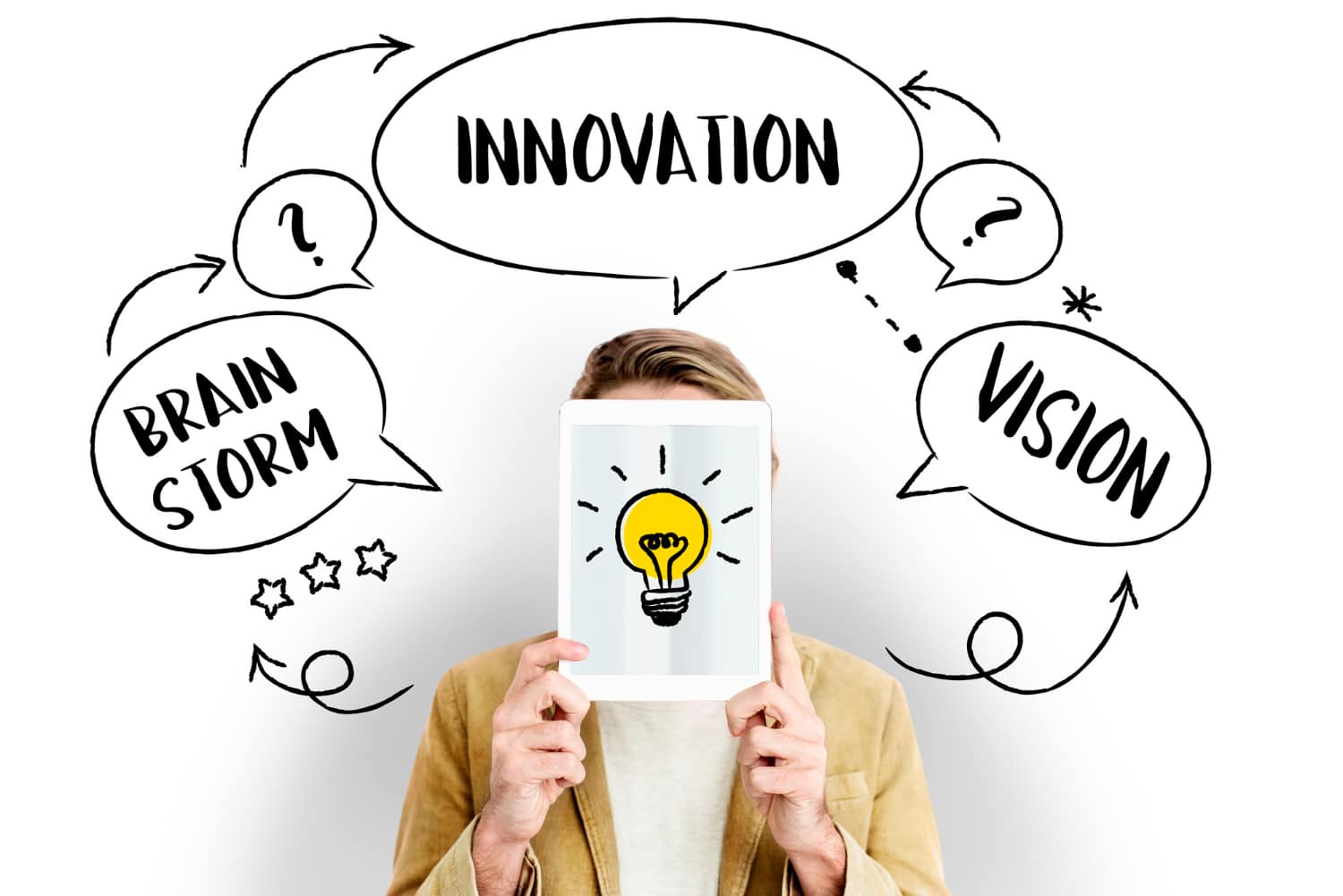
Unlocking Creativity: Techniques to Foster Innovative Thinking
In today’s fast-changing world, innovation is the engine that drives success. Whether you’re launching a startup, solving a business challenge, or writing your next big campaign, creativity is no longer a “nice to have”—it’s essential. Yet, for many teams and individuals, it can feel elusive.
So, how do some people consistently come up with fresh ideas while others hit a mental wall? The truth is, that creative thinking is a skill that can be developed, not just a talent you’re born with. By using targeted creativity exercises, applying effective innovation strategies, and embracing practical brainstorming methods, you can unlock a powerful source of inspiration.
In this blog, we’ll explore science-backed ways to foster innovative thinking, break down creative barriers, and build a mindset that sees possibilities where others see problems. Whether you’re in a creative role or leading a team, these insights will help you unlock new ideas and unleash your potential.
Understanding Creativity: Beyond the “Aha!” Moment
What Is Creativity, Really?
Creativity isn’t limited to artists or inventors. It’s the ability to:
- See connections between unrelated concepts
- Approach problems with original perspectives
- Generate multiple solutions to a single challenge
In business, creativity fuels innovation—turning new ideas into valuable outcomes.
The Neuroscience Behind Innovation
Studies in cognitive psychology reveal that creativity is linked to divergent thinking—the process of generating many unique ideas—and convergent thinking, where we refine and evaluate those ideas.
The brain’s default mode network (DMN) plays a central role, especially during moments of rest or reflection. That’s why your best ideas often strike during a shower or walk—your brain is making unexpected connections.
Effective Creativity Exercises to Boost Innovative Thinking
1. The “30 Circles” Challenge
A fast-paced visual exercise to loosen creative muscles:
- Draw 30 blank circles on a sheet.
- In 3 minutes, turn as many as possible into recognisable objects (e.g., a clock, smiley face, pizza).
This warm-up breaks your pattern of perfectionism and encourages spontaneous thinking.
2. SCAMPER Technique
A structured method for enhancing existing ideas:
- Substitute: What can be replaced?
- Combine: Can elements be merged?
- Adapt: What else is like this?
- Modify: What can be changed?
- Put to another use: Can it be repurposed?
- Eliminate: What can be removed?
- Reverse/Rearrange: Can the order or format be altered?
Used widely in product design, SCAMPER helps turn conventional thinking on its head.
3. Role Storming
An imaginative twist on traditional brainstorming:
- Assume the role of someone else—Steve Jobs, a customer, or even a child.
- Ask: How would they approach this problem?
By stepping out of your usual mindset, you spark fresh insights and unexpected solutions.
Proven Innovation Strategies for Teams and Organisations
Encourage a Culture of Curiosity
Creative teams are built, not born. Leaders must:
- Reward questioning, not just answers
- Celebrate experimentation, even when it fails
- Give time and space for exploration
Google’s “20% Time”—which lets employees work on side projects—produced Gmail and AdSense. That’s the power of institutionalised curiosity.
Mix Diverse Perspectives
Innovation thrives at the intersection of different experiences. Bring together people with:
- Varied backgrounds and skill
- Different departments or industries
- Contrasting viewpoints
This diversity encourages novel combinations and challenges groupthink.
Build an Innovation Framework
Structure fuels creativity. Develop a process that includes:
- Problem definition
- Idea generation
- Evaluation and testing
- Implementation
Frameworks like Design Thinking or Lean Startup help teams move from ideation to action efficiently.
Brainstorming Methods That Actually Work
1. Brainwriting
An inclusive alternative to traditional brainstorming:
- Each participant writes down three ideas in silence.
- After 5 minutes, they pass their paper to the next person.
- Each new person builds on the previous ideas.
This avoids groupthink, encourages introverted contributors, and surfaces unique thoughts.
2. Crazy 8s
Popular in design sprints, Crazy 8s is a rapid sketching exercise:
- Fold a sheet into eight sections.
- In 8 minutes, sketch eight different solutions.
This forces teams to push beyond the obvious and generate volume over perfection.
3. The “Worst Idea” Game
Reverse the goal: encourage everyone to come up with the worst possible idea.
- Laugh together.
- Identify elements that actually have potential.
- Flip the worst ideas into better ones.
This disarms fear and builds a fun, open mindset—ideal for sparking true creativity.
Removing Common Blocks to Creativity
Fear of Judgement
People often hold back ideas because they fear being wrong. As a leader or team member:
- Promote psychological safety.
- Avoid early criticism during brainstorming.
- Encourage risk-taking.
“Bad ideas” often lead to great solutions—if they’re allowed to surface.
Time Pressure and Burnout

Stress kills creativity. Counter it by:
- Allowing time for reflection between tasks
- Taking walking meetings or outdoor breaks
- Setting aside regular “no-meeting” creative hours
Giving the brain breathing room helps it form new connections.
Perfectionism
Waiting for the perfect idea prevents any idea from forming. Remember:
“Done is better than perfect. Ideas can always be refined later.”
The goal of ideation is quantity. Refinement comes after.
Real-World Example: Airbnb’s Breakthrough Moment
Early on, Airbnb’s founders were struggling. Their idea—renting out air mattresses—wasn’t gaining traction. One of their key turning points came through structured brainstorming and storytelling exercises. By reframing their brand as “belonging anywhere”, they unlocked a narrative that resonated globally.
They also embraced design thinking workshops to refine the platform. Today, Airbnb is one of the world’s leading examples of creativity meeting strategy.
Embedding Creativity in Everyday Work
Create Daily Creative Rituals
- Set aside 10 minutes daily for free writing or sketching.
- Start meetings with a quick creativity exercise like “one-word story.”
- Keep a visible “idea board” in physical or digital form.
Consistency builds creative momentum.
Use Tech Tools Wisely
Tools like:
- Miro for digital whiteboarding
- Notion for capturing random thoughts
- Obsidian for linking ideas through knowledge graphs
…can amplify the creative process without replacing human ingenuity.
Reward Creative Effort, Not Just Results
When you only reward outcomes, people avoid risk. Celebrate:
- Out-of-the-box thinking
- Bold pitches
- Lessons learned from “failures”
This builds a culture where innovation is safe and celebrated.
Creativity Is Your Competitive Superpower

Creativity isn’t magic. The muscle grows with use, supported by the right mindset, environment, and tools. Whether you’re generating ideas alone or leading a team through a brainstorming session, applying the right innovation strategies, using structured brainstorming methods, and integrating simple creativity exercises can elevate your work and set you apart.
Remember, the best ideas often come when you’re not trying too hard—so step back, stay curious, and keep experimenting.
Ready to unlock your next big idea? Choose one exercise from this post and try it today. You might be surprised by what you discover—and where your mind can take you.